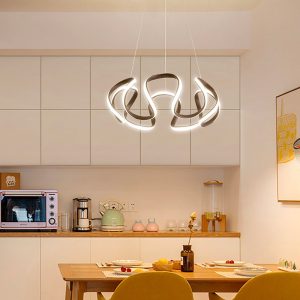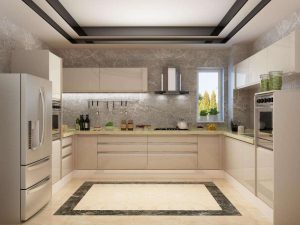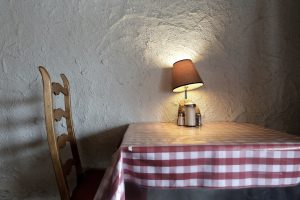Exploring the Various Types of False Ceilings for a Creative Interior Design

Introduction: What is a False Ceiling?
A false ceiling, also known as a dropped ceiling, is a secondary ceiling that is hung below the primary ceiling. It is primarily used to conceal unsightly wires, ducts, and pipes, but it can also improve the acoustics of a room, enhance lighting, and add an element of style and sophistication to the interior design. There are several types of false ceilings available today, each of which offers its own unique benefits and drawbacks.
Types of False Ceilings
Suspended Ceiling
The suspended ceiling, also known as the modular ceiling or grid ceiling, is one of the most commonly used types of false ceilings. It consists of a metal grid that is suspended from the primary ceiling, and is filled with acoustic tiles, gypsum boards, or other lightweight materials. Suspended ceilings are easy to install, maintain, and repair, and they offer excellent soundproofing and fire resistance. However, they can also reduce the ceiling height, which may not be appropriate for rooms with low ceilings.
Gypsum Ceiling
The gypsum ceiling, also known as the plasterboard ceiling or drywall ceiling, is made of gypsum boards that are attached to the primary ceiling with screws or adhesive. Gypsum ceilings are lightweight and easy to install, and they offer a smooth, seamless finish that can be painted or decorated with wallpaper. They are also fire-resistant, insect-resistant, and can resist moisture to some extent. However, they may not be suitable for areas with high humidity or water exposure, as they can absorb moisture and become damaged over time.
PVC Ceiling
The PVC ceiling, also known as the plastic ceiling or vinyl ceiling, is made of PVC (polyvinyl chloride) panels that interlock with each other to form a seamless surface. PVC ceilings are lightweight, moisture-resistant, and easy to clean, making them ideal for high-humidity areas such as bathrooms and kitchens. They are also available in a variety of colors, patterns, and textures, and can be easily installed on top of existing surfaces. However, they may not be as durable as other types of false ceilings, and can become discolored or brittle over time.
Metal Ceiling
The metal ceiling, also known as the tin ceiling or steel ceiling, is made of metal tiles or panels that are stamped with intricate designs and patterns. Metal ceilings offer a unique, vintage aesthetic that can add character and charm to any room. They are also durable, fire-resistant, and easy to clean. However, they can be expensive, heavy, and difficult to install, and may not be suitable for every interior design.
Wooden Ceiling
The wooden ceiling, also known as the timber ceiling or hardwood ceiling, is made of natural wood panels or beams that bring warmth, texture, and natural beauty to a room. Wooden ceilings can be left unfinished or stained to achieve a rustic or modern look, and can also be painted or whitewashed to match any interior design. They are also durable, easy to repair or replace, and can improve the acoustics by absorbing sound. However, they can be expensive, heavy, and may require regular maintenance to prevent warping or cracking.





